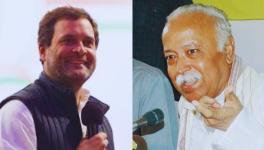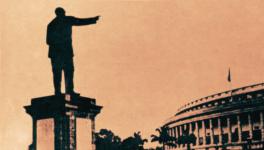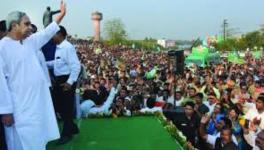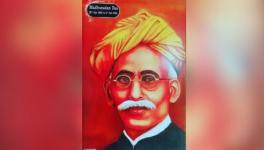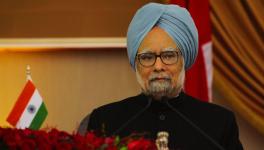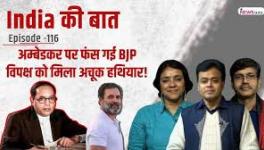Haryana Results: Just 1% Separates Cong and BJP

Representational Image. Image Courtesy: PTI
The results of the Assembly elections in Haryana and Jammu & Kashmir have come as a bit of a shock to most common people, mainly because these went against the prevailing narratives. For Haryana, there was almost a consensus in the media that Congress was doing well and likely to win. This was confirmed by the exit polls which uniformly predicted a decisive victory for Congress. In J&K, common sense suggested that since Bharatiya Janata Party (BJP) is unlikely to do well in the 48 seats of Kashmir Valley, it is unlikely to form a government, but their spin-masters and a supportive army of commentators sought to argue that BJP might breakthrough in the Valley too, and so on.
But the results declared on October 8, showed a clear victory for BJP in Haryana and an equally clear win for the National Conference-led alliance in the Union Territory of J&K. Before unpacking this unexpected result, here are the headline numbers.
In the 90-member Haryana Assembly, the incumbent BJP got 48 seats, three more than the halfway mark of 45, while the challenger Congress got 37 seats. Besides these, two seats went to the Indian National Lok Dal, a pale shadow of the erstwhile ruling party, and three seats were won by independents. The Jannayak Janata Party (JJP) a former ally of the BJP and partner in the outgoing government, was decimated, not getting even a single seat.
For the J&K Assembly also, elections were held for its 90 members, of which the National Conference alliance won 49 seats, including 42 for NC, six for Congress and one for CPI(M). Thus, the alliance has got a clear majority. In fact, the Lieutenant Governor of the Union Territory has the power to nominate five members as per the J&K Reorganisation Act of 2019 (as amended in 2023). Even if these are included, the NC Alliance has still got a majority.
Haryana: Vote Shares Show Different Picture
In Haryana, despite the wide gap in BJP and Congress numbers, the vote share received by each is very close. BJP contested the election with the Haryana Lokhit Party and the combined vote share of these two is 40.4%, of which BJP has 39.9%. Congress contested with CPI(M) as its ally and the combined vote share of the alliance is 39.4%, with Congress on its own having 39.1%.
So, the gap between the two alliances is a mere 1%. This would translate into about 1.6 lakh votes only. More interesting is the trajectory of their respective vote shares since the previous election in 2019, and, also since the Lok Sabha election that was held only three months ago. BJP had got 36.5% votes in the 2019 Assembly elections and then in the 2024 Lok Sabha elections, it managed to get 46.1% share. So, while it has improved its vote share slightly – by about 3.4 percentage points – since 2019, it has lost out compared to the Lok Sabha elections when it got 46.1% votes.
The Congress vote shares have a different story to tell: its vote share in the 2019 Assembly elections was just 28.1%. So, it has improved its performance by a whopping 11 percentage points since then. In the Lok Sabha elections held earlier this year, Congress had garnered 43.7% votes from where it too, like BJP, reduced to the current 39.1%.
The main reason for vote accretion to both the parties appears to be the collapse of JJP, which got practically wiped out in this election. JJP was in the government with BJP and it drew heavy criticism (along with BJP) for complicity in the violence and oppression unleashed against farmers during the year-long struggle against the three farm laws in 2020-21.
What this means is that the discontent of the agricultural communities against BJP that has simmered since the 2020 farmers agitation, has resulted in increased vote share for Congress. Discontent is further aggravated by the dire economic situation with raging unemployment, back-breaking inflation, especially in fuel and food, and chronic low incomes/wages. Hence, there has been a consolidation of a negative vote against BJP and its ally, JJP, as there was widespread anger against the ruling parties.
Agrarian distress, propelled by low returns of farm produce, rising input prices and the obstinate refusal by the BJP government to consider statutory guarantees for Minimum Support Prices for farm produce has caused widespread anger in rural areas. This is reflected in results from rural seats: Congress won 11 of the 20 rural seats getting over 44% of the vote share, while BJP could get nine seats and 41% votes.
The other largely agrarian-based parties – INLD and JJP – could muster only 4.3% votes from these rural seats and didn’t win a single rural seat between them. Even among 44 semi-urban or ‘rurban’ seats, Congress ended up with a larger vote share of 39.3% compared with BJP (37%) but got beaten in the seat numbers. It won 18 ‘rurban’ seats compared with BJP’s 23.
Urban Swing and Anti-Jat Consolidation
It was in the urban areas that BJP was able to make up the deficit it faced in rural areas. Remember that Haryana has a relatively higher rate of urbanisation – at about 35%, compared with the national average of 31%. Of the 26 urban seats, BJP won 16, getting a vote share of 46.3% while Congress won eight, with a vote share of nearly 36%. Two seats went to Independents.
The urban areas have been favouring BJP for long and several communities are concentrated more in urban sites, including Scheduled Castes, Punjabis and some of the Other Backward Classes (OBCs). The perceived tilt of Congress toward the Jat community was utilised by BJP to rally other castes and communities through unscrupulous caste-based polarisation campaigns that reflected most starkly in the urban areas.
Dalit votes appear to have divided almost equally between Congress and BJP, with both getting 44% vote share each, although Congress ended up with nine reserved seats and BJP with eight out of the total 17 reserved seats. Notably, the Bahujan Samaj Party, which contested in alliance with the INLD, could get 2.4% votes and no seats, while the Azad Samaj Party of Chandrashekhar Azad ‘Ravan’ (contesting with JJP) got a mere 0.2% votes in these reserved seats.
Electoral Tactics Tilted Balance
The gap between the Congress and BJP alliances is so small that some of the electoral tactics may be responsible for Congress’ loss. For instance, the complete reliance of Congress to allow Bhupinder Singh Hooda, former Chief Minister and a dominating figure in Jat politics, to determine candidate selection led to open factional schism in the Congress. Reportedly, Hooda was responsible for giving 78 of the tickets in Congress party. Dalit leader and Congress MP Kumari Selja detached herself from the campaign for several days, reportedly because of this factional fight.
There were 26 rebel candidates in all, drawn from the two main parties. Although only three of them won (two BJP and one Congress), it seems rebels spoiled the chances of their respective parent parties in 15 seats – of which 10 were from Congress.
Get the latest reports & analysis with people's perspective on Protests, movements & deep analytical videos, discussions of the current affairs in your Telegram app. Subscribe to NewsClick's Telegram channel & get Real-Time updates on stories, as they get published on our website.









